Top 10 searched phones on Google!
#10 Vivo Z1 PRO
#8 Realme 3 PRO
The Samsung Galaxy M20 is Samsung's attempt to take on Xiaomi, Realme, Honor, and Asus in the fiercely competitive low-cost market. It offers specifications that are good enough to match these rivals, plus a very modern all-screen look with a waterdrop-style notch. The Exynos 7904 processor was designed specifically for the value segment in India and works quite well. The display is large and crisp, and the battery life is very good. However, the cameras are just mediocre, and Samsung's UI is riddled with spammy ads and notifications. The Galaxy M20 will appeal to Samsung fans who are looking for a great value.
#1 Redmi Note 7 PRO
The Redmi Note 7 Pro is one of the most feature-packed phones in its price bracket, bringing a premium design, capable octa-core processor, 48-megapixel camera, and fast charging support to the table. The phone packs a 6.3-inch full-HD+ (1080x2340 pixels) LTPS In-Cell display protected by a layer of Gorilla Glass 5. Content on the display looks sharp with crisp colors, but at the same time, it is also quite reflective.The phone is powered by the Snapdragon 675 processor ticking alongside up to 6GB of RAM. Be it heavy multitasking or games like PUBG Mobile and Asphalt 9, the phone barely struggles at all. The Redmi Note 7 Pro runs MIUI 10 based on Android 9 Pie, and even though it is rich in features, you will also have to see pesky ads.
The phone’s 48-megapixel main camera captures beautiful images with ample detail, high dynamic range, and good vibrancy. The night mode also performs well, while selfies captured by the 32-megapixel front camera also look sharp with natural colors and edge detection in bokeh mode. The 4,000mAh battery ensures that the Redmi Note 7 Pro easily sails past a full day of usage, while support for Qualcomm's Quick Charge 4.0 fast charging technology helps to quickly top up the battery.
Vivo's new Z1 Pro is aimed at Millenials who are highly critical of specifications and features, and who prefer buying phones online. It has plenty of selling points including a large, crisp, notch-less screen with a punch-hole for the front camera. This is also the first phone in India to feature the Qualcomm Snapdragon 712 processor, which gives it a performance advantage at its price level, especially for gaming. There's a 5000mAh battery with support for quick charging, and three rear cameras. There are three variants: 4GB RAM with 64GB storage, 6GB RAM with 64GB storage, and 6GB RAM with 128GB storage. You can also choose between the shiny Sonic Blue and Sonic Black finishes. The Vivo Z1 Pro puts up a strong showing in terms of its display, cameras, processor, and battery. We enjoyed using it for everyday tasks as well as entertainment. One slight damper is that Vivo's Funtouch OS takes a bit of getting used to, and has a lot of bloats. Some people might find this phone too bulky and heavy, but it's priced very well and offers great value even compared to other heavyweights in its segment
#9 OnePlus 7
The OnePlus 7 is the successor of the OnePlus 6T and was launched alongside the OnePlus 7 Pro. It looks identical to the OnePlus 6T. At the front, the OnePlus 7 sports a 6.41-inch Optic AMOLED display with full HD+ resolution. The AMOLED panel has good viewing angles and has multiple display modes to choose from. OnePlus has opted for a dewdrop notch on the 7 which houses a 16-megapixel selfie camera. The OnePlus 7 has Corning Gorilla Glass protection at the front and the back which should help it resist scratches. Powering the phone is a Qualcomm Snapdragon 855 SoC that is capable of running every game out there. There are two variants of the OnePlus 7, 6GB RAM with 128GB storage and 8GB RAM with 256GB storage. We had the 8GB RAM variant for review and it managed to score high in all our benchmark tests. It was snappy for day-to-day performance but could also handle heavy games easily.
The OnePlus 7 packs in a 3700mAh battery and is able to deliver all-day battery life. The company supplies a 20W charger with the phone and it is capable of topping the battery up completely in an hour.OnePlus has opted for a dual-camera setup on the phone consisting of a 48-megapixel primary sensor and a 5-megapixel depth sensor. The camera performance was slightly disappointing and the camera suffered in low-light conditions. On the software front, the phone runs on Oxygen OS 9.5 on top of Android 9.0 Pie. There are useful software additions on top that are very useful.
The Realme 3 Pro is the company's latest flagship, designed to take on the Redmi Note 7 Pro from Xiaomi. It features some new color options and the same small notch and slim bezels as its predecessor, the Realme 2 Pro. The 6.3-inch full-HD+ IPS display produces vivid colors and is very legible under direct sunlight. You also get two Nano-SIM slots and a dedicated slot for a microSD card. This is currently the only phone under Rs. 20,000 to sport the recent Qualcomm Snapdragon 710 SoC. It's an efficient chip built on the 10nm fabrication process and features a better GPU compared to a Snapdragon 675, which shows in benchmarks and games. The phone is available in two variants -- 4GB of RAM and 64GB of storage and 6GB of RAM and 128GB of storage, which is what we have. ColorOS 6 is based on Android 9 Pie, which runs smoothly and also gives you plenty of shortcuts and gestures.
App and gaming performance is very good. The phone doesn't heat up during regular use and even with gaming, it barely gets warm. The main 16-megapixel sensor captures detailed landscapes and macros under good light. The secondary 5-megapixel sensor is also good at edge detection. At night, images are generally soft but the Nightscape mode helps in bringing out better detail in objects. Videos can be recorded up to 4K resolution but without stabilization. Finally, the 4045mAh battery will last you a full day on one charge and a VOOC 3.0 fast charger is bundled in the box.
#7 iPhone 11 PRO
iPhone 11 Pro smartphone was launched on 10th September 2019. The phone comes with a 5.80-inch touchscreen display with a resolution of 1125x2436 pixels at a pixel density of 458 pixels per inch (PPI).iPhone 11 Pro is powered by a Hexa-core Apple A13 Bionic processor. It comes with 4GB of RAM. The iPhone 11 Pro runs iOS 13 and is powered by a 3046mAh non-removable battery. The iPhone 11 Pro supports wireless charging, as well as proprietary fast charging. As far as the cameras are concerned, the iPhone 11 Pro on the rear packs a 12-megapixel primary camera with an f/1.8 aperture; a second 12-megapixel camera with an f/2.4 aperture and a third 12-megapixel camera with an f/2.0 aperture. The rear camera setup has autofocus. It sports a 12-megapixel camera on the front for selfies, with an f/2.2 aperture.iPhone 11 Pro based on iOS 13 and packs 64GB of inbuilt storage. The iPhone 11 Pro is a dual-SIM (GSM and GSM) smartphone that accepts Nano-SIM and eSIM cards.
Connectivity options on the iPhone 11 Pro include Wi-Fi 802.11 a/b/g/n/ac/Yes, GPS, Bluetooth v5.00, NFC, Lightning, 3G, and 4G (with support for Band 40 used by some LTE networks in India). Sensors on the phone include accelerometer, ambient light sensor, barometer, gyroscope, proximity sensor, and compass/ magnetometer. The iPhone 11 Pro supports face unlock with 3D face recognition.The iPhone 11 Pro measures 144.00 x 71.40 x 8.10mm (height x width x thickness) and weighs 188.00 grams. It was launched in Gold, Midnight Green, Silver, and Space Grey colors. It features an IP68 rating for dust and water protection. It bears a glass body. As of 26th December 2019, iPhone 11 Pro price in India starts at Rs. 97,900.
#6 Realme 5
The Realme 5 features an updated crystal pattern on the back and retains the polycarbonate build and laminated plastic back panel of its predecessor. The phone has is a little heavy at nearly 200g and features a big 6.5-inch HD+ display. The low resolution isn't a huge issue as colors and brightness are still quite good. The Realme 5 has a slot on the side for two Nano-SIM cards and a dedicated slot for a microSD card. It runs on ColorOS 6.0.1, which features a flatter and simpler looking interface, closer to stock Android 9 Pie. You get a bunch of customization options too such as gestures and shortcuts. The phone is powered by a Snapdragon 665 SoC and comes in three variants. The top-end version which we reviewed has 4GB of RAM and 128GB of storage. App and gaming performance is good and the phone doesn't heat up too much.
Realme 5 has four cameras at the back, which is the first phone to have such an arrangement under Rs. 10,000. Besides the primary camera and depth sensor, Realme has also added a wide-angle and a macro lens, which is useful. The 13-megapixel selfie camera also has electronic stabilization for videos. Overall, the cameras perform well under good light but struggle to capture good detail in low light. Realme 5 has a 5000mAh battery, which easily lasts for a day and a half or even more on one charge. Unfortunately, fast charging isn't supported. Overall, the Realme 5's base variant (3GB of RAM, 32GB of storage) offers the best value at Rs. 9,999 but even the 128GB version at Rs. 11,999 is still good value, considering the overall package.
#5 Redmi Note 8 PRO
Redmi Note 8 Pro smartphone was launched on 29th August 2019. The phone comes with a 6.53-inch touchscreen display with a resolution of 1080x2340 pixels and an aspect ratio of 19.5:9. Redmi Note 8 Pro is powered by an octa-core MediaTek Helio G90T processor that features 2 cores clocked at 2.05GHz and 6 cores clocked at 2GHz. It comes with 6GB of RAM. The Redmi Note 8 Pro runs Android 9 Pie and is powered by a 4500mAh non-removable battery. The Redmi Note 8 Pro supports proprietary fast charging.
As far as the cameras are concerned, the Redmi Note 8 Pro on the rear packs a 64-megapixel primary camera with an f/1.79 aperture; a second 8-megapixel camera with an f/2.2 aperture; a third 2-megapixel camera and a fourth 2-megapixel camera. The rear camera setup has autofocus. It sports a 20-megapixel camera on the front for selfies, with an f/2.0 aperture.
The Redmi Note 8 Pro runs MIUI 10 based on Android 9 Pie and packs 64GB of inbuilt storage that can be expanded via microSD card (up to 512GB) with a dedicated slot. The Redmi Note 8 Pro is a dual-SIM (GSM and GSM) smartphone that accepts Nano-SIM and Nano-SIM cards. Connectivity options on the Redmi Note 8 Pro include Wi-Fi 802.11 a/b/g/n/ac, GPS, Bluetooth v5.00, NFC, Infrared, USB Type-C, 3G, and 4G (with support for Band 40 used by some LTE networks in India) with active 4G on both SIM cards. Sensors on the phone include accelerometer, ambient light sensor, compass/ magnetometer, gyroscope, proximity sensor, and fingerprint sensor. The Redmi Note 8 Pro supports face unlock. The Redmi Note 8 Pro measures 161.70 x 76.40 x 8.81mm (height x width x thickness) and weighs 200.00 grams. It was launched in Electric Blue, Gamma Green, Halo White, Pearl White, and Shadow Black colors. It bears a glass body. As of 26th December 2019, Redmi Note 8 Pro price in India starts at Rs. 14,999.
#4 Vivo S1
The S1 is the first smartphone under the S series from Vivo to launch in India. The S series focuses on style and there is no denying that the S1 does look stylish. It comes in two color variants called Diamond Black and Skyline Blue. We had the Diamond Black variant which had a catchy diamond pattern at the back. Vivo has put a 6.38-inch AMOLED display on the S1. It has good viewing angles and adequate brightness when outdoors. It also houses an in-display fingerprint scanner. The Vivo S1 has a waterdrop notch that houses the selfie camera. At the back, the S1 sports a triple camera setup consisting of a 16-megapixel primary sensor, an 8-megapixel ultra-wide-angle lens, and a 2-megapixel depth sensor. We weren't impressed with the fact that the S1 sports a Micro-USB port while most other smartphones in this price range have a Type-C port.
Vivo ships the S1 with FunTouch OS running on top of Android 9 Pie. It has customizations and comes with a few apps preinstalled. The Vivo S1 is powered by a MediaTek Helio P65 SoC and is the first smartphone in India to do so. There are three variants of the Vivo S1, 4GB RAM with 128GB storage, 6GB RAM with 64GB of storage and 6GB RAM with 128GB of storage. We had the top-end variant for review and it did not face any issues in day-to-day usage.
We played games like PUBG Mobile which the S1 ran at medium settings. The phone did get warm to the touch after gaming for 20 minutes. The camera is where the S1 still needs some work as we weren't happy with its performance. It does a decent job in daylight but delivers below-average performance in low-light. The 4,500mAh battery offers a good battery life and Vivo does ship an 18W fast charger in the box. The Vivo S1 does feel pricey compared to some of its competitors like the Realme X and the Oppo K3.
#3 Redmi Note 7We played games like PUBG Mobile which the S1 ran at medium settings. The phone did get warm to the touch after gaming for 20 minutes. The camera is where the S1 still needs some work as we weren't happy with its performance. It does a decent job in daylight but delivers below-average performance in low-light. The 4,500mAh battery offers a good battery life and Vivo does ship an 18W fast charger in the box. The Vivo S1 does feel pricey compared to some of its competitors like the Realme X and the Oppo K3.
The Redmi Note 7 features a glass front and back with Corning Gorilla Glass 5 protection on both sides. The phone feels incredibly premium, especially for its starting price of Rs. 9,999. The 6.3-inch LCD display produces decent colors and the brightness level is also very good. The Redmi Note 7 has a dewdrop notch, a notification LED in the chin and a hybrid SIM slot. It’s powered by a Qualcomm Snapdragon 660 SoC which offers a very good app and gaming performance. MIUI 10 still spams you with a lot of ads and promotions but you can disable most of them.
The rear 12-megapixel camera on the Redmi Note 7 captures usable daylight shots but the AI can make colors look unnatural. Low-light camera performance isn’t stellar and so is the video recording, but the selfie camera shoots decent images. The 4000mAh battery on the Redmi Note 7 will last you a full day on a single charge and there’s fast-charging support too, however, that charger doesn’t come bundled in the box.
#2 Samsung Galaxy M20The Samsung Galaxy M20 is Samsung's attempt to take on Xiaomi, Realme, Honor, and Asus in the fiercely competitive low-cost market. It offers specifications that are good enough to match these rivals, plus a very modern all-screen look with a waterdrop-style notch. The Exynos 7904 processor was designed specifically for the value segment in India and works quite well. The display is large and crisp, and the battery life is very good. However, the cameras are just mediocre, and Samsung's UI is riddled with spammy ads and notifications. The Galaxy M20 will appeal to Samsung fans who are looking for a great value.
#1 Redmi Note 7 PRO
The Redmi Note 7 Pro is one of the most feature-packed phones in its price bracket, bringing a premium design, capable octa-core processor, 48-megapixel camera, and fast charging support to the table. The phone packs a 6.3-inch full-HD+ (1080x2340 pixels) LTPS In-Cell display protected by a layer of Gorilla Glass 5. Content on the display looks sharp with crisp colors, but at the same time, it is also quite reflective.The phone is powered by the Snapdragon 675 processor ticking alongside up to 6GB of RAM. Be it heavy multitasking or games like PUBG Mobile and Asphalt 9, the phone barely struggles at all. The Redmi Note 7 Pro runs MIUI 10 based on Android 9 Pie, and even though it is rich in features, you will also have to see pesky ads.
The phone’s 48-megapixel main camera captures beautiful images with ample detail, high dynamic range, and good vibrancy. The night mode also performs well, while selfies captured by the 32-megapixel front camera also look sharp with natural colors and edge detection in bokeh mode. The 4,000mAh battery ensures that the Redmi Note 7 Pro easily sails past a full day of usage, while support for Qualcomm's Quick Charge 4.0 fast charging technology helps to quickly top up the battery.


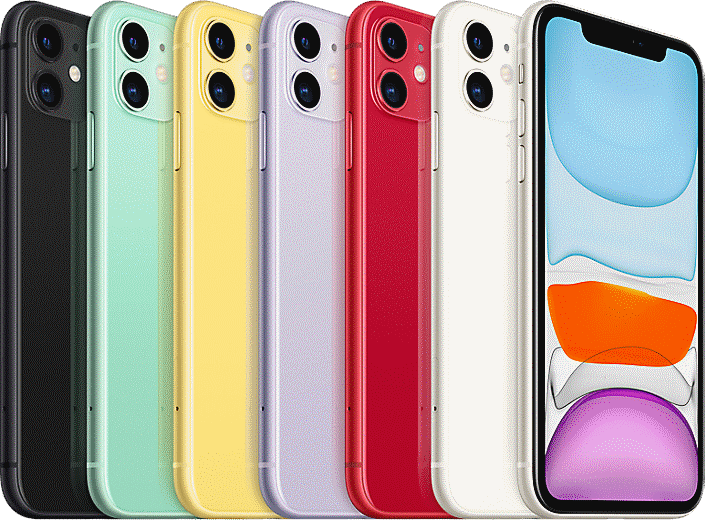
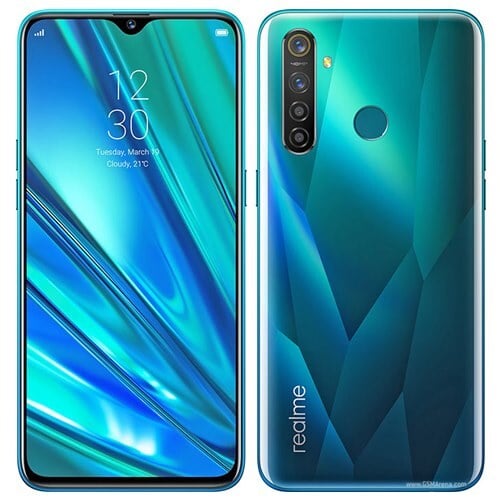
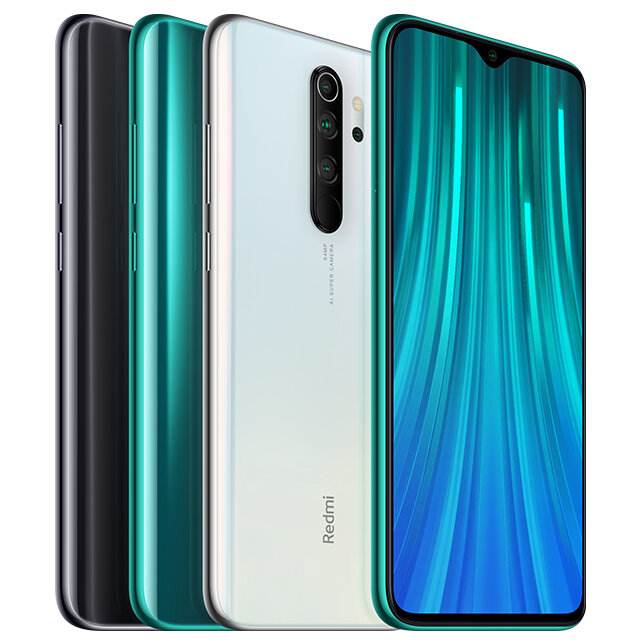
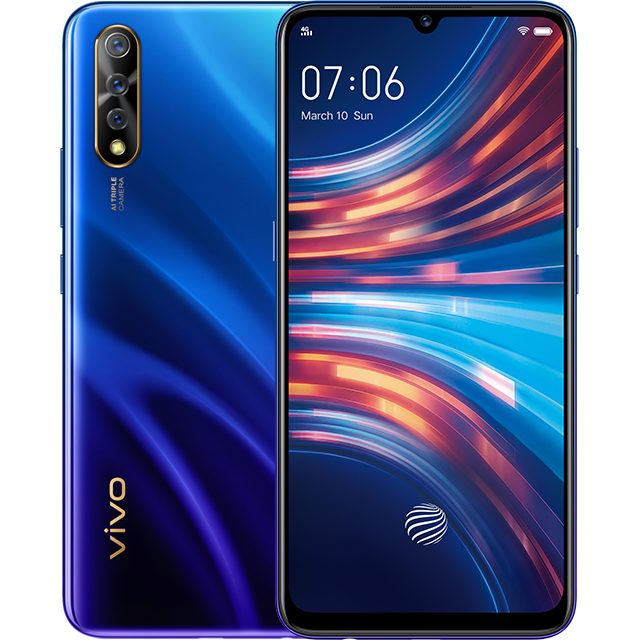
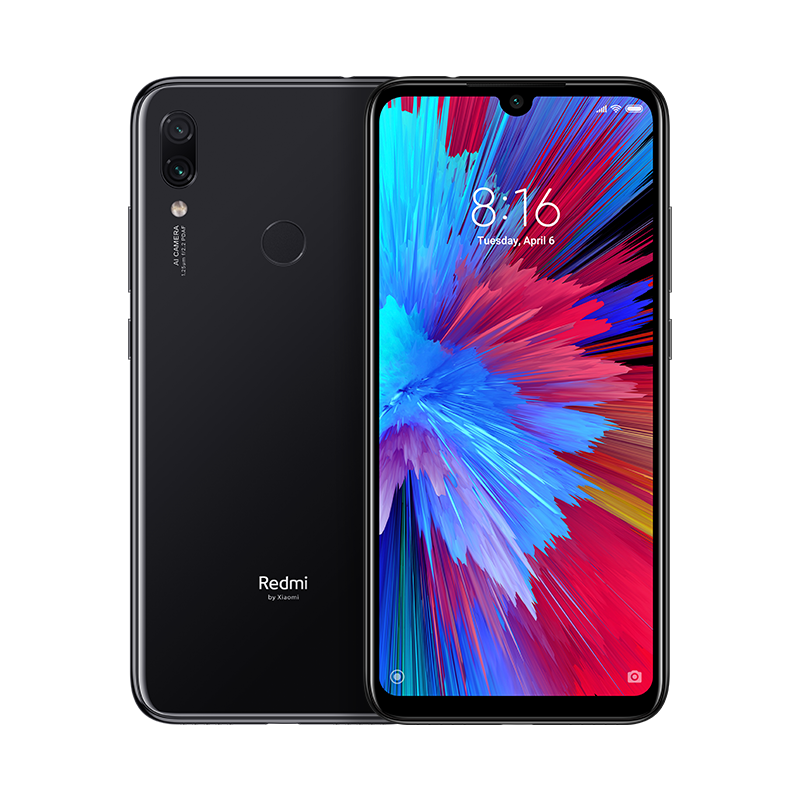





Comments
Post a Comment